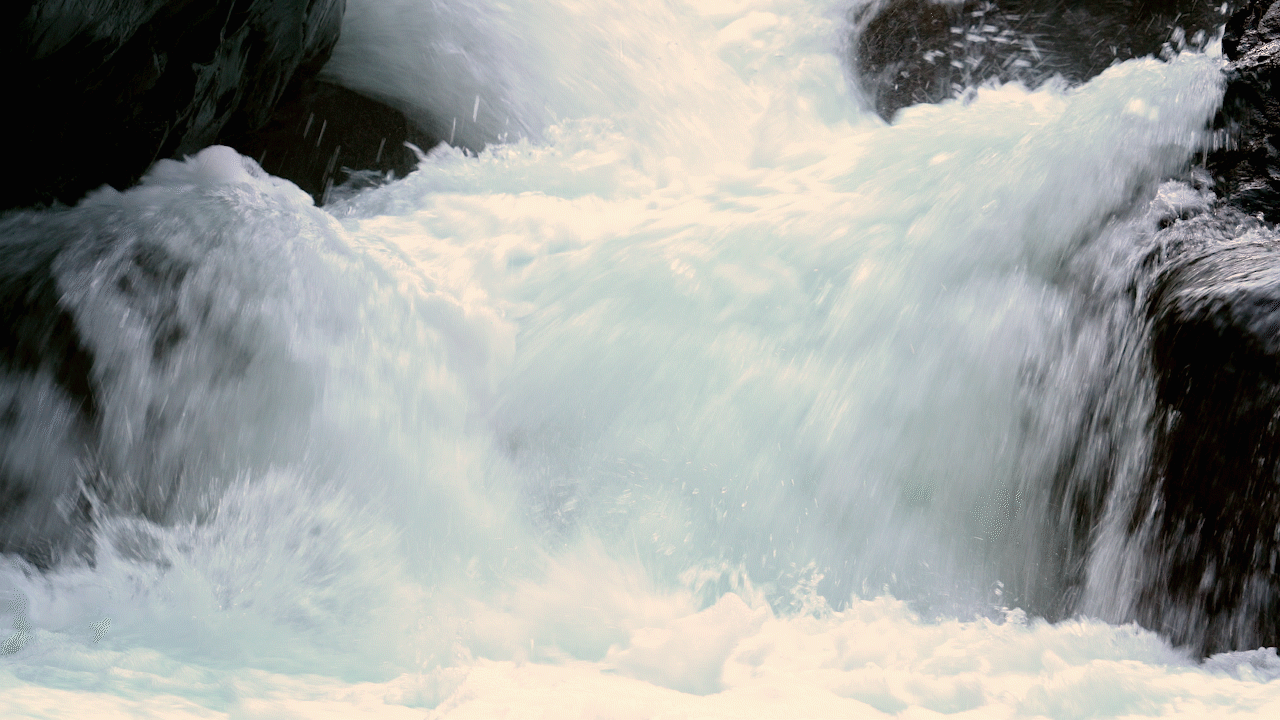How Do Salmon Find Their Way Home?
Written by Mary Caperton Morton
Originally published by Eos
Coho salmon attempting to jump up a waterfall on the Sol Duc River (Photo: Sara Montour Lewis/Our Wild Puget Sound)
After spending their adult lives at sea, salmon famously swim upriver until they reach the exact location where they were hatched. Salmon complete this incredible journey only once—after they spawn, they die. A new study has found evidence that salmon’s homing instinct may be driven in part by tiny particles of magnetite that serve as an internal compass, a mechanism previously identified in sea turtles, bats, and birds but not yet in fish.
Long-distance animal navigation is thought to be partly guided by Earth’s magnetic field via a phenomenon known as magnetoreception. “Magnetoreception seems to be fairly universal,” having been identified in all major taxonomic animal groups, said Richard Holland, a zoologist at Bangor University in the United Kingdom who was not involved in the new study.
Magnetoreception is thought to operate in three possible ways. (1) Crystals of the naturally magnetic mineral magnetite embedded in the animal’s tissues may enable them to orient relative to Earth’s magnetic field. (2) The magnetic field could influence biochemical reactions within the animal, in an interaction known as chemical magnetoreception. (3) The mechanism could involve electromagnetic induction. Or the process could be a combination of all three.
Magnetite Compass
In 1985, a team identified bits of magnetite in the olfactory region of chinook salmon. Recent studies have found the mineral in the brains of other animals, including humans. “But nobody had taken the next critical step to link the possession of magnetite in fish to a change in behavior following a magnetic pulse,” said Lewis Naisbett-Jones, a graduate student in biology at the University of North Carolina in Chapel Hill and lead author of the new study, published in the Journal of Experimental Biology.
For their study, Naisbett-Jones and colleagues subjected hatchery-raised juvenile chinook salmon to a brief magnetic pulse strong enough to reset the polarity of a compass. They then compared the behavior of the pulsed fish to that of unpulsed fish using a magnetic coil system to create various magnetic field scenarios. They found that the test and control fish behaved differently, with the pulsed fish all facing the same direction and the control fish more randomly oriented, indicating that the pulse had “reset” the fishes’ ability to sense direction.
The effects of the pulse are thought to be short-lived and should not permanently affect the fish, said coauthor David Noakes, a professor of fisheries at Oregon State University in Corvallis.
However, without knowing the exact mechanisms by which magnetite influences fish behavior and navigation, “it’s difficult to know whether such experiments are really affecting what we think they are affecting,” Holland said. “A strong electromagnetic pulse could, in principle, disrupt neuronal activity” and cause a change in behavior unrelated to navigational senses, he said.
“The biggest challenge that has not been resolved is the location and structure of the [magneto]receptors,” Holland said, a step beyond identifying magnetite particles in tissues. “Without this knowledge, [designing] behavioral experiments to clearly demonstrate its function is difficult.”
(Vide: Sara Montour Lewis/Our Wild Puget Sound)
Smelling Home
Fish are also thought to use olfactory signals to home in on their birthplace, Noakes said. “Just like how certain smells might remind you of your grandmother’s kitchen.”
It’s likely that magnetite-based navigation is used over longer migratory distances and then the olfactory signals take over as the fish swims upriver, but it’s hard to know whether one method prevails over the other in certain conditions or if both work in conjunction, he said.
Pinpointing the mechanisms that salmon use to navigate may help scientists create more homing-friendly hatchery environments, Noakes says. Each year, hatcheries release about 5 billion fish into the oceans to help compensate for reductions in wild populations due to dams, habitat loss, and water management issues. Less than 5% of juveniles survive to adulthood and attempt the return trip.
Hatchery-raised salmon seem to have more trouble navigating than their wild cousins, with as many as 30% to 40% of returners getting waylaid on their way back to the hatchery. The low return rate may be due in part to the artificial and “magnetically unclean” design of hatcheries, Naisbett-Jones says. “Concrete, iron rebar, and electrical wires all could potentially scramble the fish’s senses and interfere with their homing abilities.”
There are endless amounts of stories floating around the wild waters of Puget Sound. While we wish we could cover them all ourselves, we've been told that we have to sleep sometimes, so we occasionally feature stories covered by other brilliant writers, photographers, and publications that are just as curious about the Salish Sea as we are.
This story originally appeared at Eos
Citation:
Morton, M. C. (2020), Internal compass guides salmon’s incredible journey, Eos, 101, https://doi.org/10.1029/2020EO144817. Published on 09 June 2020.


